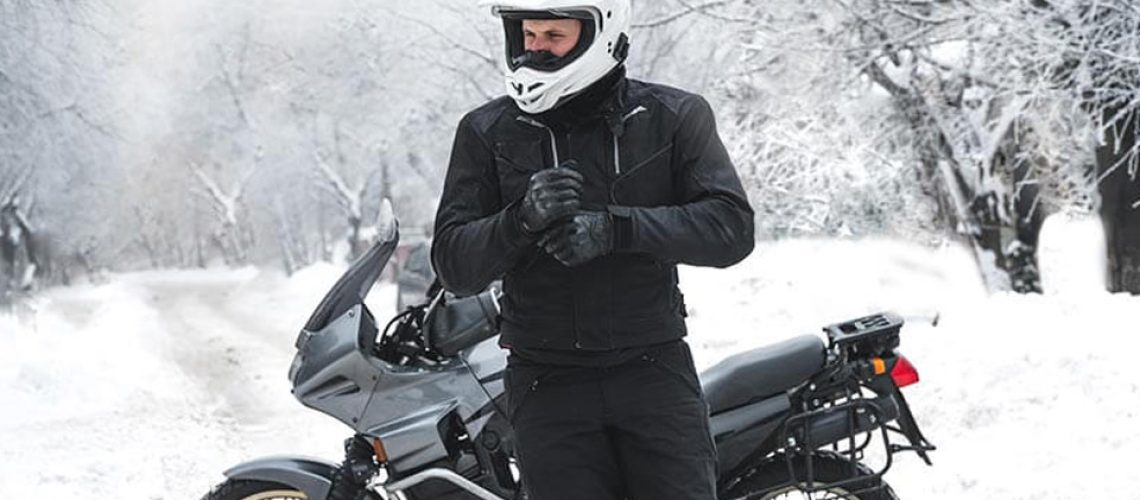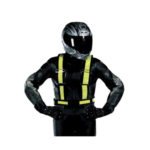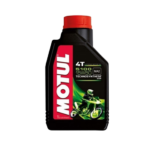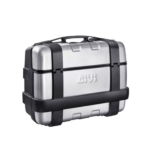Blog


Πάρης Παναγιωτάρας
12 essential tips for riding your motorbike through the winter
- ,
- , Motocycle
writer: Chris Torney
1. Make the right preparations before you set off
Unlike during the warmer months, it’s crucial during winter to carry out some thorough safety checks before the start of each journey.
The T-CLOC method is a great starting point.
This involves checking the following before each ride:
- Tyres
- Controls
- Lights
- Oil levels
- Chassis.
Making sure your tyre pressure is at the right level could be vital when riding in treacherous conditions.
If the air temperature is below 10 degrees Celsius then your tyre pressure can drop by 2 or 3 psi.
This might not sound like much but could be enough to make the steering heavier and the brakes less stable. So check your tyre pressure before setting out.
If you haven’t been out on the motorcycle in a while, let your engine run for a few minutes to ensure it’s fully warmed up before you set off.
And if you aren’t using your motorbike regularly because of the weather, think about using a trickle charger to keep your battery in roadworthy condition.
The start of winter is also a good time to change your bike’s oil. This means it should be completely free of contaminants, which could also corrode engine parts.
2. Fight winter dirt and corrosion
Salt from gritted winter roads could be a major threat to the health of your bike. As is the crud and mud that can attach itself when you’re riding in poor weather conditions – even when you’re not heading off road.
To protect your motorcycle, seal the bike’s finish with a good surface-protection fluid.
And the bad news is, during winter you’re going to have to give your motorbike a thorough clean after each and every journey.
This is preferable to having to replace rusted or broken parts – and especially to breaking down while you’re on a trip.
Ideally you should wash the underside of your ride with cool or cold water.
Warm water could simply melt the salt crystals, allowing them to get into the bike’s inner workings and cause even more problems there.
If you damage your motorbike beyond repair, you might find yourself having to buy a new motorcycle.
3. Protect your motorbike from ice damage
Freezing water could be 1 of the most serious hazards bikers face during the colder months.
If moisture gets trapped in your bike’s inner workings it could freeze when temperatures drop and make metal brittle.
This means there’s a real risk that key components are liable to jam or, in the most serious cases, break.
This could leave you to foot a hefty repair bill that might not be covered by your motorbike insurance.
So what precautions can you take to stop moisture entering your motorbike?
First, be sure to clean and lubricate your drive chain on a regular basis.
This is something you should be doing even when weather conditions are good, but in the winter this task assumes the utmost importance.
If your drive chain freezes it can make it difficult to accelerate smoothly, and it could even end up snapping. Your clutch cable might also benefit from the same clean-and-lubricate treatment.
If you’re riding the type of motorbike that has a liquid-cooling system, check regularly that there’s fresh antifreeze in the water tank. And make sure that it’s flushed properly through the bike.
4. How to dress for winter motorcycle riding
There’s no more important time to ensure you’ve got the right motorbike riding gear than during winter. Think about:
- The right gloves, boots and underlayers won’t just keep you warm, they could provide you with extra protection in a motorbike accident.
- Icy or wet road surfaces in the colder months might increase the chances of you coming off your motorbike at some point.
- Wearing several layers can be much more effective at keeping you warm than simply going for a top-of-the range jacket. Plus you can add or remove layers to adjust your temperature.
- Factor wind chill into the equation. If you look only at the expected temperature you could find yourself unprepared for how cold it’ll feel with the effect of wind chill.
- Staying as visible as possible with a fluorescent outer layer. And always assume that other road users can’t see you, just to be on the safe side.
- Extra gear that could help you stay warm ranging from heated insoles that plug into your 12v outlet, to heated grips and handlebar muffs. Good for long rides in cold weather.
5. Understand the cold
The cold does bad things to your reactions and decision making. If your core body temperature drops a couple of degrees it slows down your brain’s processing speed.
This can cause you to make bad decisions and increases tension through your body as it tries to retain heat. Braking and throttle control are seriously affected by cold hands.
If you feel cold in your hands and feet, or start shivering, you’re on your way to hypothermia. Stop as as soon as possible and get properly warm before you carry on.
6. Grip vs vision
it’s vital to think about how to ride safely when conditions are at their worst.
On icy roads, stopping distances can increase by a factor of 10, according to research from road safety charity Brake.
Consider how you handle your motorbike, especially in icy conditions. Try your best to ride in a straight line and don’t brake or accelerate too hard.
If the road is providing low grip, apply your brakes lightly and then with increasing force when you can feel that your front tyre has dug in.
7. Shadows mean ice
Any dark patch on a winter road could be ice – so treat it like it is. Even on a sunny day, a morning frost can linger into the afternoon.
In general terms, you should ride cautiously and assume that surfaces are icy unless you can see clear evidence to the contrary.
8. Avoid vision creep
The road in winter could be wet, covered in leaves, shining with oil patches or ice, or have salt and gravel washed across it. It’s understandable that your attention is drawn closer and closer to your front wheel.
Before long you’re looking almost straight down, not ahead scanning the road as you should be.
The trick is to do exactly as you would in summer – the more you can see ahead, the more time you have to prepare and respond to a potential hazard.
- Rather than fixate on any specific hazard, continuously scan the road ahead
- Observe and gather detailed information
- Then use that information to understand the impact it will have on your riding position, speed and road use
Reading the road is one of the most important skills you can develop as a biker. If you can do it in winter, it’ll be easy in the summer.
9. Consider group rides
In cold weather conditions can change very fast and in the event of a motorbike breakdown, or worse, an accident, having mates along with you could literally be a lifesaver.
10. Get trained
If you only ride your motorbike in the summer and in good weather, depending on where you live in the country, you could be missing out on a lot of riding.
Doing an advanced rider training course could give you the confidence to go out in all weathers.
11. Know when to stay off the road
Just because you’re planning to keep your motorbike operational over the winter months doesn’t mean you should be happy to head out in any conditions.
Sometimes you just need to take things easy, stay at home or find alternative means of transport.
Keep a keen eye on weather forecasts so you’re not caught out by unexpected storms or snowfall.
If conditions are generally changeable – as is often the case in the UK during winter – it might be better simply not to take the risk.
Don’t just look at the headline temperature. Think about the effects of wind-chill as well, that can lower the temperature you feel by several degrees.
Also, be sure to choose your routes carefully, as not all roads are gritted during the winter.
And be aware of how much light you’ll have. Ideally you don’t want to be on the road in the dark, while the low winter sun of morning and evening can easily blind you.
The temperature often drops sharply after sunset, creating a higher risk of ice.
12. Stay covered
Knowing what factors are going to affect your riding in the winter is a good start. But the darker days, icy weather and increased chances of something going wrong should be a reminder to make sure you have suitable motorbike insurance in place.














































